Annebet Philips: “I Do What I Do Because It Is Who I Am.”
If you’re at home, like I am right now, you are surrounded by products that were each designed by a particular person. And you can bet that person has a story to tell. To find out more about the story behind the fabulous new knotted lamp in my hallway, I headed…

If you’re at home, like I am right now, you are surrounded by products that were each designed by a particular person. And you can bet that person has a story to tell. To find out more about the story behind the fabulous new knotted lamp in my hallway, I headed to Amsterdam to meet up with its designer, Annebet Philips. We spent a lovely afternoon together and realized we had a lot more in common than we thought. Annebet also shared some of her design insights with me. Whether you’re a design aficionado or a young designer, you need to sit down right now for some genuine Philips lightbulb moments. “It’s great when you produce one successful design, but it’s even better when you make another one!”
Annebet Philips: “I Do What I Do Because It Is Who I Am.”

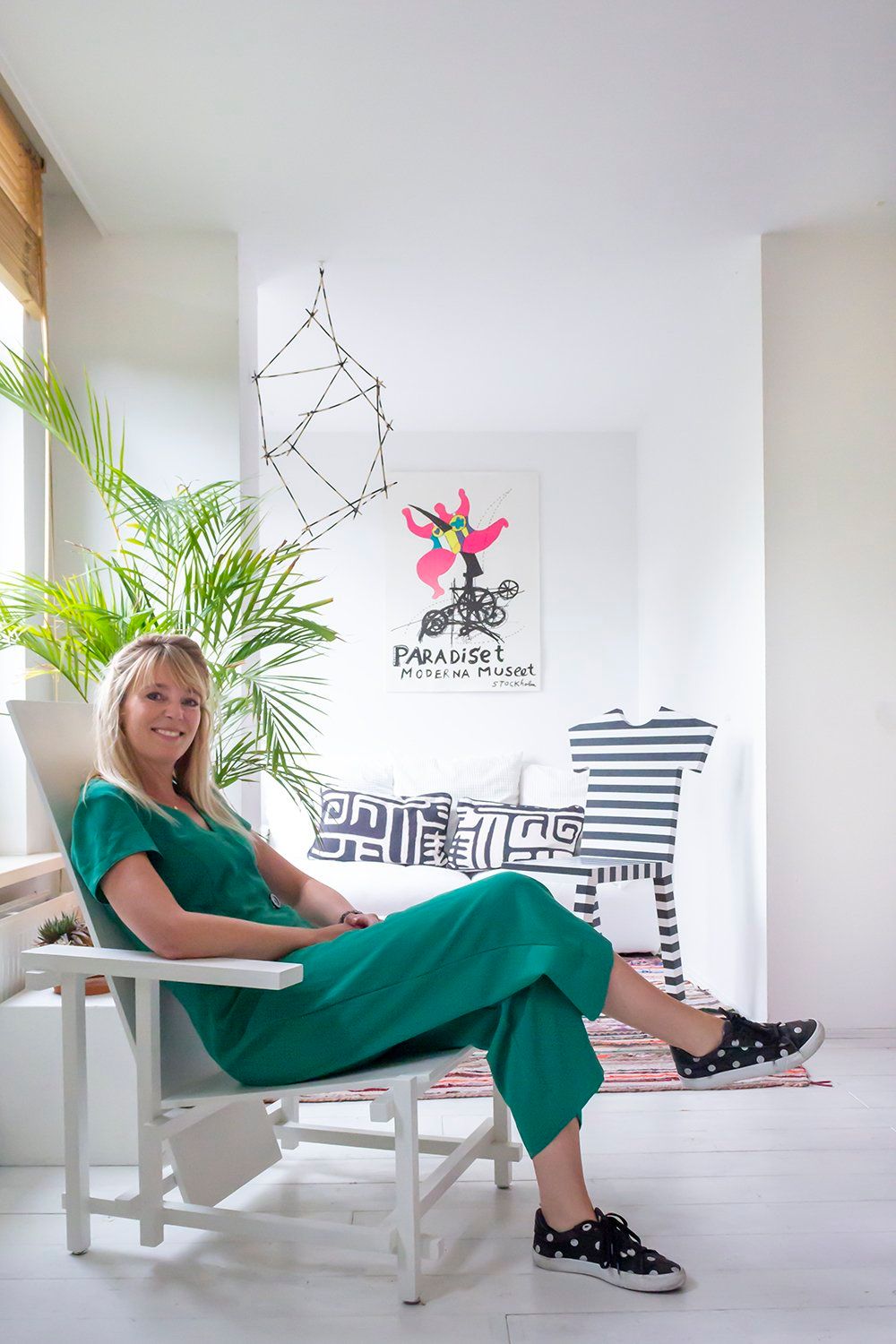
So, where does the story behind my new lamp start?
I grew up on a converted farm in the Dutch countryside, in a remote village near the town of Gorinchem. It used to take me 45 minutes one way to ride my bike to school. Like many other girls, I played with Barbie dolls. But because I didn’t particularly like pink, I made them their very own clothes and also a kitchen, complete with a table and matching chairs. I guess you could say I was a very creative little girl. But since I also got very good grades in secondary school, the obvious choice at the time was to go to university. And so, off I went to study Industrial Design at the Technical University in Delft.
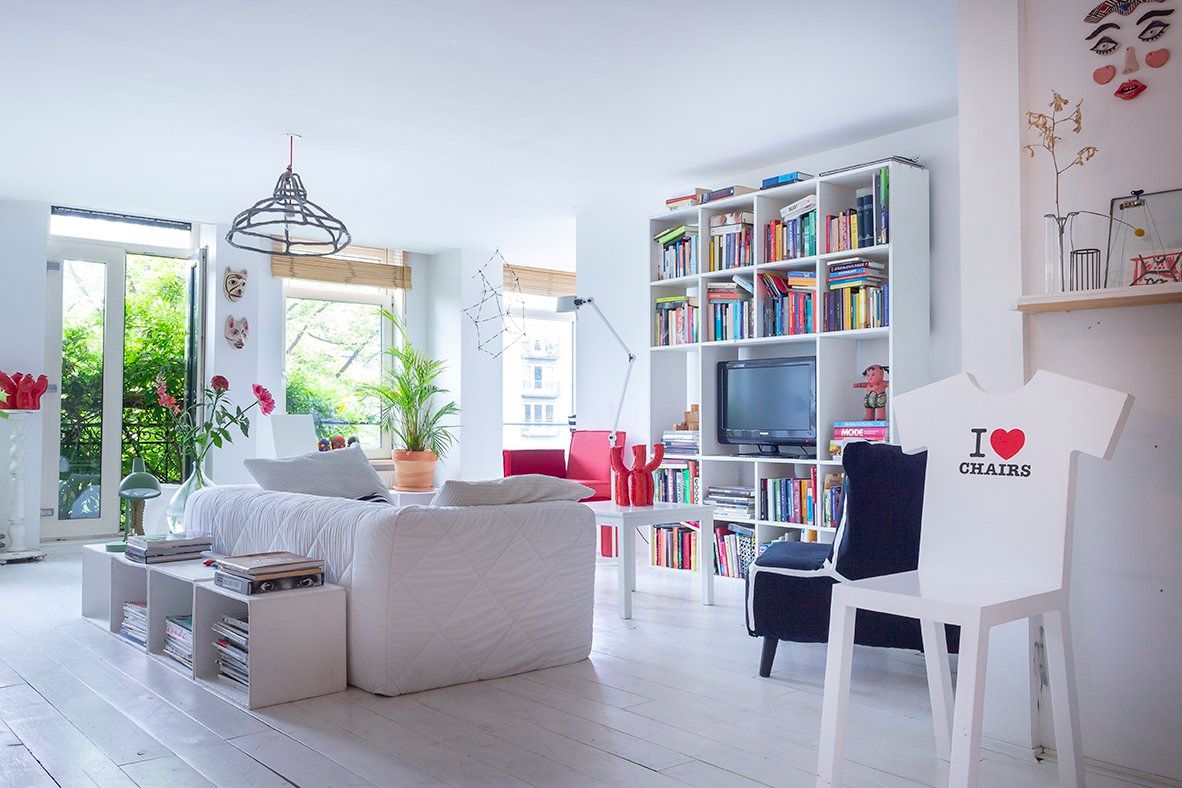

That doesn’t necessarily sound like the most obvious choice to me.
I really enjoyed it, although I have to say I preferred the more creative subjects. In my first year, I made a chess set out of papier-mâché. It was very chaotic and not technical at all. I graduated in Product Design, which was very nice. I even did an internship at Philips – no relation, by the way – but I quickly realized I didn’t want to end up designing vacuum cleaners. Fashion is what I liked best back then. In retrospect, an art academy or the Design Academy in Eindhoven would have fitted me better. I don’t regret my choice, however. After all, I ended up doing what I always did!
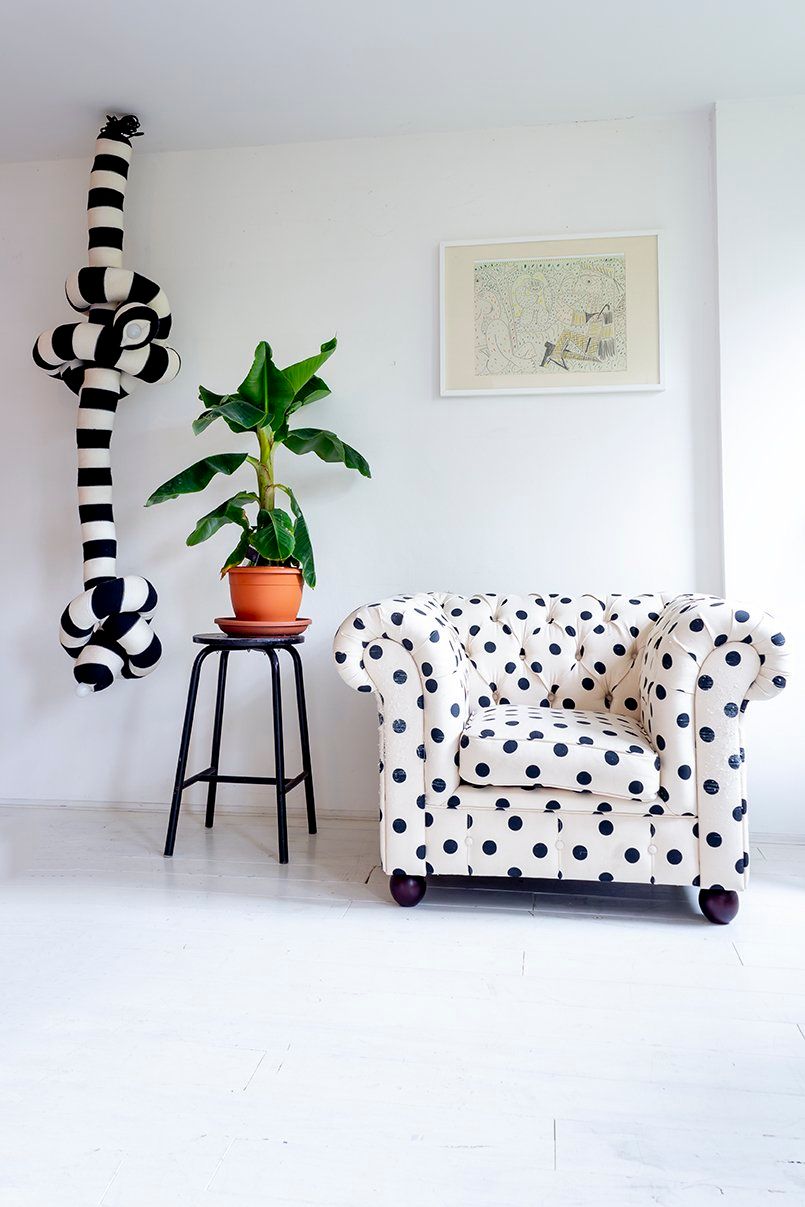

Why did you like fashion better?
I was fascinated by all those fast-changing trends in fashion. There were also more than a few brands that really appealed to me. It’s funny, because even though I grew up in what is called the Dutch Bible Belt, my parents were quite liberal. My mother was an artist – still is, by the way – and she imprinted on me that I should always make my own choices. I have several of her paintings her at home.
How have your parents influenced you?
My mother subtly nudged me into drawing and painting. When I was bored, for example, she would suggest something like, why don’t you go and paint these little wooden sticks I have here? My father, on the other hand, had studied anthropology. He was a lot more structured, but I do owe my interest in philosophy and my analytical side to him.

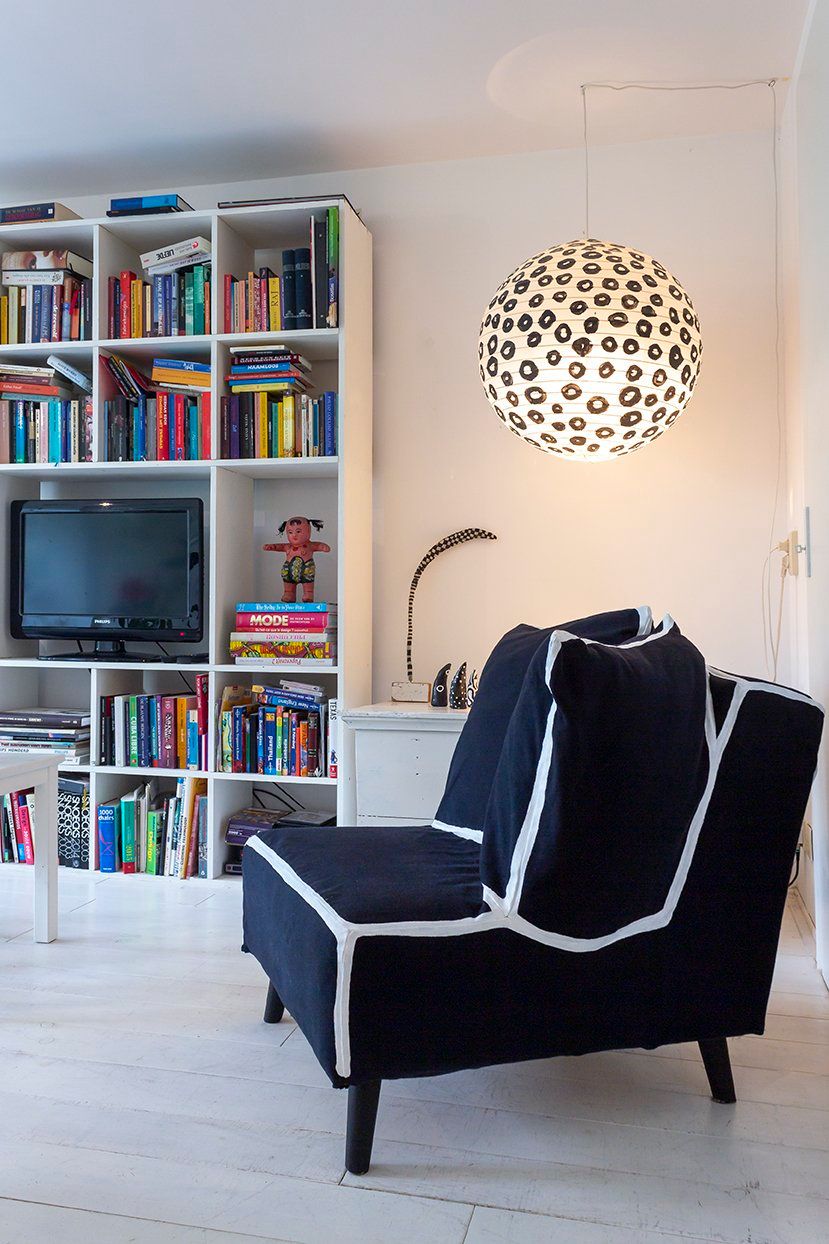
I guess you have both sides in you!
Yes, I guess you could say I can be quite structured and analytic – but I also have an artistic streak. That is why I moved to Amsterdam after my graduation. I found a job designing menswear for Tommy Hilfiger. I loved the speed of the design process and how you could put together a collection. So much better than coming up with a clever design for a tiny part of a mold! I particularly enjoyed putting together mood boards for each season and then just have things made in China. When I moved to Scotch & Soda, I started doing retail design as well. On top of that, I also started my own business.
Starting a business next to a fulltime job can be quite stressful. How was that for you?
I spent about six months figuring out what I wanted to do. Luckily, I met a man called Anton de Groof. He is the founder of Tonone, a design company in the Dutch town of Bois-le-Duc. Why don’t you come and work for me part time, Anton asked? I did and spent the rest of my week setting up my first studio. Anton and I had such synergy working together.
How come?
Anton can generate lots of ideas in a short amount of time. I was his voice of reason during the design process: Is it nice enough? Isn’t it too big? Shouldn’t we show this in Milan? We worked together for about three years. After that, I started working as a freelance designer for one of the biggest Dutch online retailers to design a range of home brand indoor and outdoor furniture. Initially I thought it would only be for a short period, but I’m still working for them part-time after almost three years.

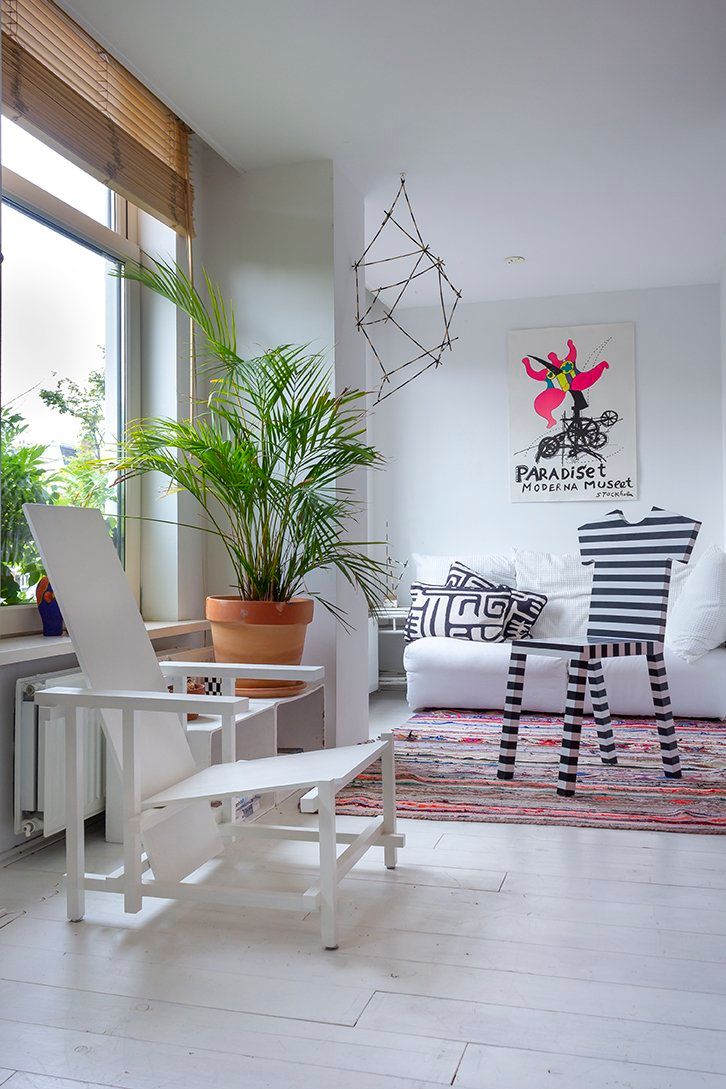
What do you like best in a job like that?
I particularly like working in a team. i love it that I get the chance to learn so much and I get to travel to Asia a lot. Working for a big commercial company definitely keeps you grounded. You can design the most beautiful things in the world, but you still have to think of how it is going to be produced, packaged and shipped. If you don’t think of every little detail, you run the risk of losing money. I like it that I can show my own more conceptual work during the Dutch Design Week one day and design for a mass audience the next. It’s interesting that I can get to be part of both worlds.
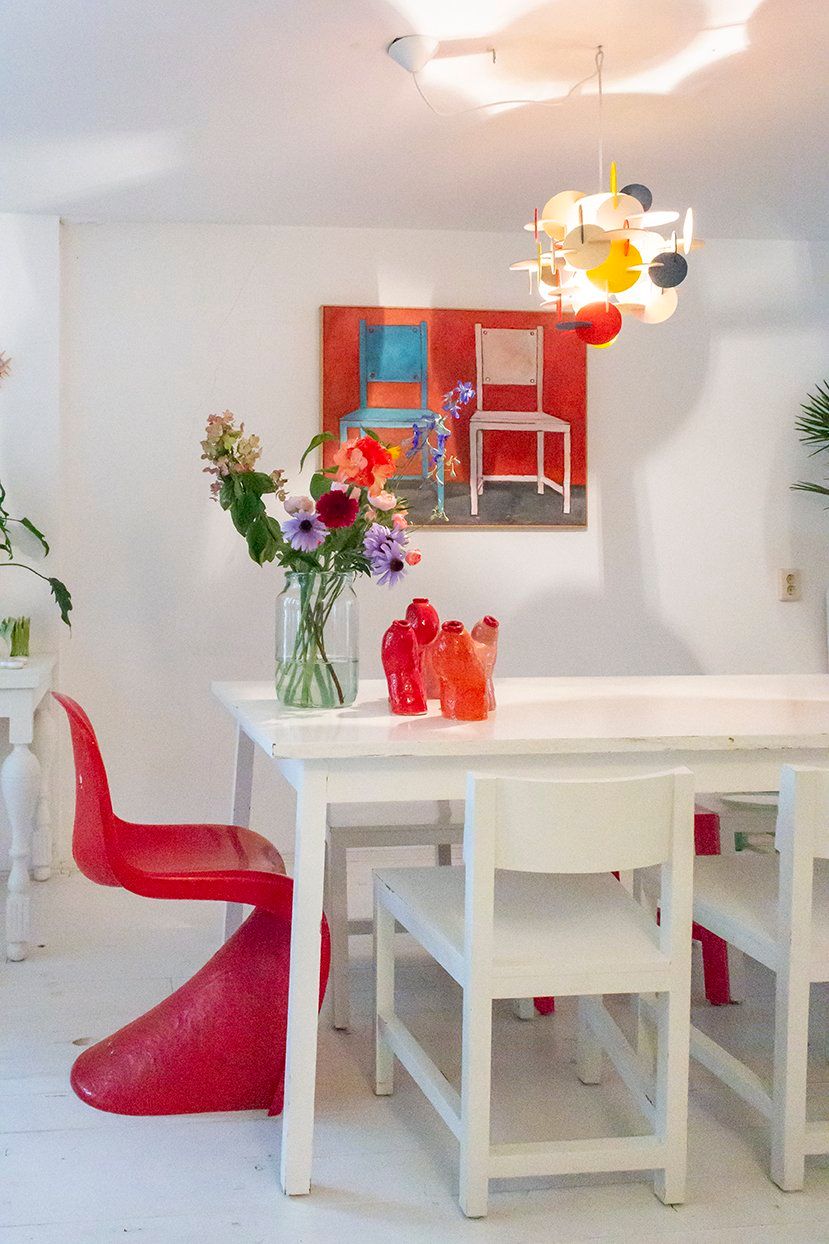

I guess it makes you a better designer, even if it does feel contradictory.
I guess it does. The worlds of design and commerce are interdependent. It would be so nice if they came together more often. I feel lucky that I can put my signature on my commercial work. My style is very graphic. It has lots of straight lines and no frills. My work can also be very colorful. It’s fascinating to see which designs catch on and which don’t. When I put together a collection, I always include one or two eyecatchers that give the more neutral pieces some more cool. Usually, the designs I like best personally aren’t the big sellers. I guess they are too outspoken. But sometimes I see one of them catching on and I think to myself, isn’t it nice that people are now apparently ready for this?

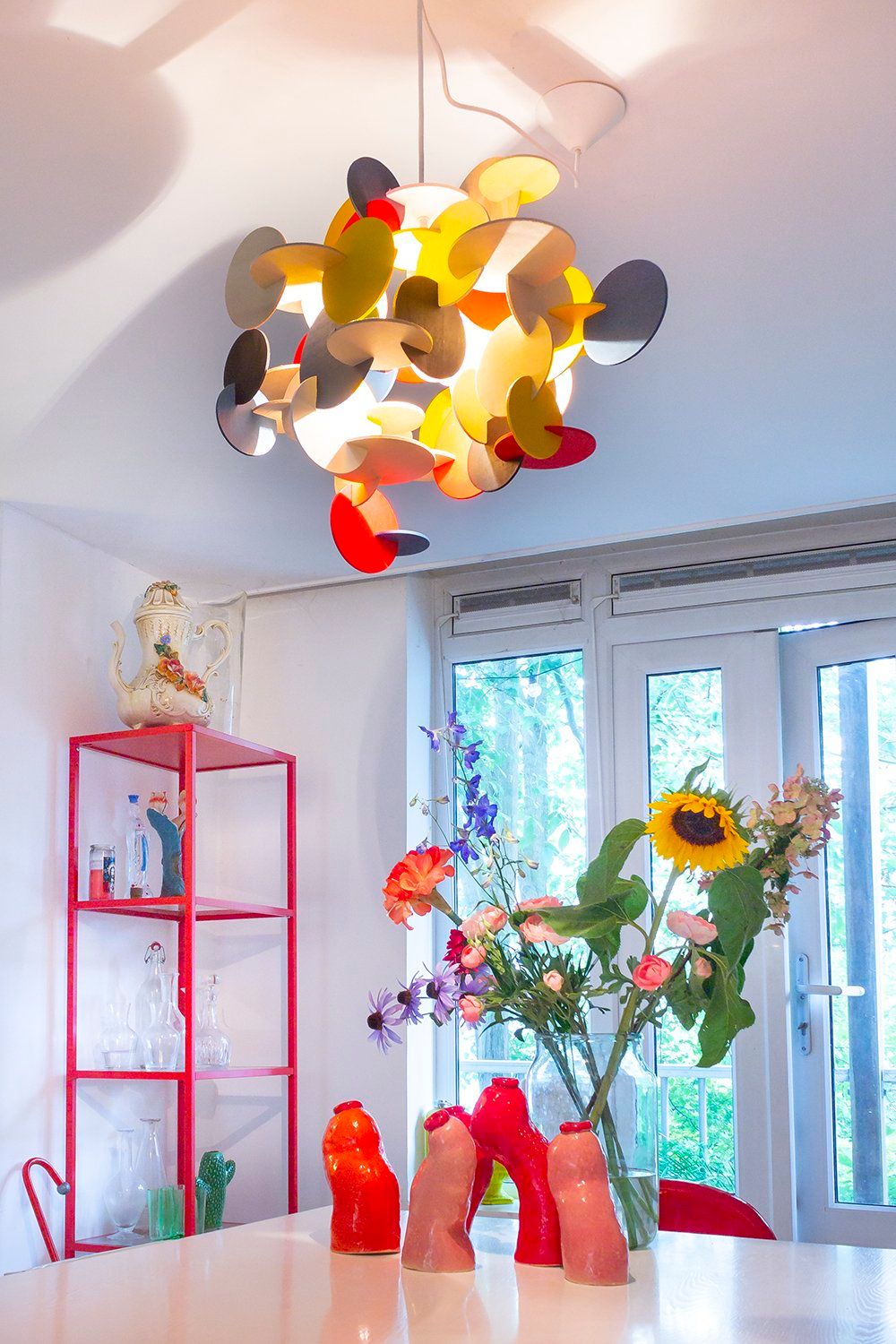
Do you think the average consumer doesn’t respect good design?
I think that as consumers, we’ve grown used to buying a chair for 30 euros. Nowadays, it doesn’t take a lot for us to think of a design as expensive. Only a handful of people seem to be willing to spend more on good design.
I’ve spoken to so many designers who are frustrated that you have IKEA on end of the spectrum and the really exclusive design on the other with very little in between.
That’s why I think that brands such as HAY and Fest are interesting. It’s a bit more expensive what they do, but still affordable. And they have some very well-designed pieces.
You said that your style of design is very graphic. How come?
I suppose I like clear lines. I also like to add a little twist. Something that makes you look twice. I love making people look at things differently. In fact, I did a one-week Philosophy course earlier this year. I wanted to get away from all the visual stuff I do and learn something completely different. And I did, although I must say it was also a confirmation of what I do. I want to observe things from different angles, just like you do in philosophy.
I guess as you get older, you become more nuanced. You can look at things from more than one perspective.
You can understand everyone if you’re willing to go with the flow. That also goes for my work. My designs are not heavy-handed. I love it when people tell me it brings a smile to their face.
You’re not the only designer to add a twist to their work. Do you ever worry that people might not get your little design joke?
What does go through my mind sometimes is that I’m only one of many designers who work in a similar fashion. In the end, however, I do what I do because it is who I am. That’s what it comes down to, I suppose. Of course, I do experiment a lot. I can sit down at my desk and start making loads of sketches. Some of them can capture me so much that I think to myself, I’m going to drop everything and actually make it right now. But then the next moment, I think it is the most stupid idea ever. If a year goes by and I still like it, I’m onto something.
What was your first design?
That was the knotted lamp you have at home. I showed it both at Dutch Design Week and in Milan. When I first came up with the idea, I thought it would be so cool to actually make it!
It’s such an iconic piece. There truly is no other lamp like it.
I made the first prototype out of an old striped cardigan I had lying around. I then made a bigger version and added a second tentacle. I was so proud when I got to show it at Ventura Lambrate in Milan. I was convinced that Li Edelkoort was going to walk through the door and think that my lamp was the most fantastic thing ever. But when she did drop by, she walked right past me!
Ridiculous!
As a young designer, you tend to think you’re going to be discovered any minute. They often don’t realize it takes a lot of hard work to actually make it.
Do you make the knotted lamp yourself?
I used to, yes. It’s a lot of work and to be honest, that is also the reason why I’ve stopped making them. I prefer to spend my time working on new designs. I’m currently looking for a company that is willing to add the knotted lamp to their collection and produce commercially.

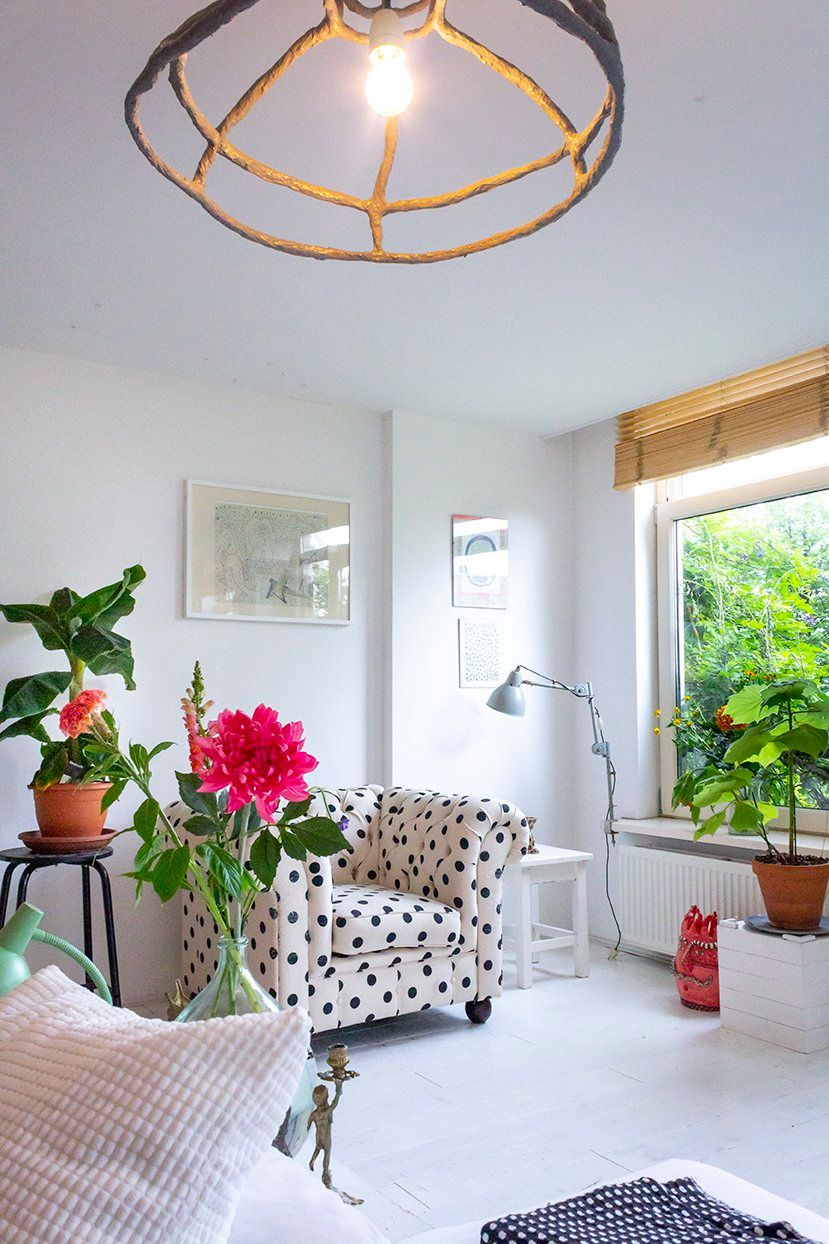
What came after the knotted lamp?
That was the Couch on Canvas, with a slip cover with painted outlines. At the moment, I’m in negotiations with a well-known furniture maker. They’re interested in producing this line. Until then I make one-of-a-kind pieces for art galeries or clients. I’ve done so many projects, such as the LoveSeats line, a range of ceramics called No Meat on Monday and the T-chair and Bugie table which are available in the collection of Italian furniture brand Mogg. I love to create different kind of products and use different kind of materials.
And what is it you’re working on at the moment?
I want to design new products that reflect my style and vision even more. A while ago, I started wondering what it was that I really wanted to do with my work. I started Googling for a business coach and found a project here in Amsterdam that pairs you up with someone from your own field of work. I ended up with none other than designer Richard Hutten as my creative coach. We had some very Nice conversations, although He could be quite blunt. If you want to hear how good your work is, he used to say, just ask for your mother or your friends. Richard’s feedback was very honest and he did teach me a lot.
I loved the clarity with which he showed me my options. He said, if you spend half your time working for others, and half on your own company, you have to realize that switching between two worlds can be difficult.

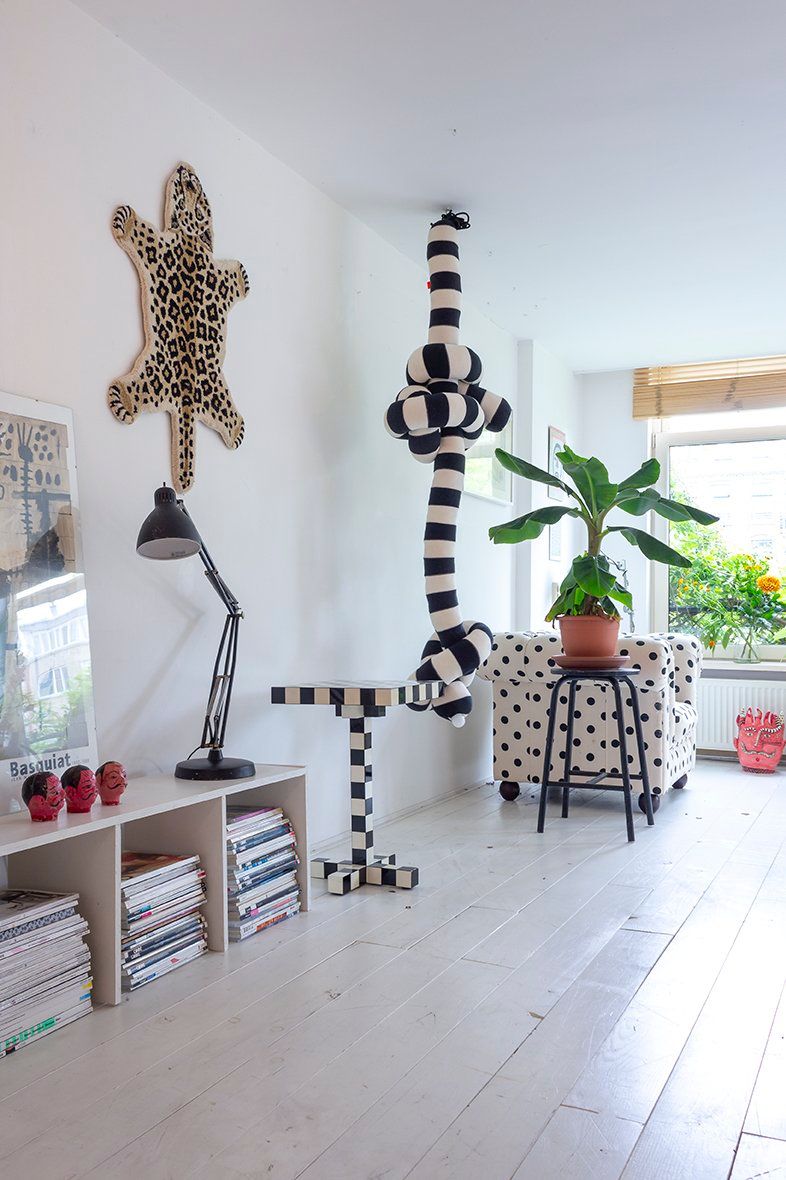
Having some financial security can be nice as well, I know from experience. But it can make it harder the creative juices flowing.
I’m like that as well. Some of my best ideas don’t come until after I spend a few days sketching and walking around the house. You have to get into it. I don’t worry about it too much, however. You can only do what you are good at. All you have to do is make sure you know what it is you’re standing for and just stick to it. Don’t get distracted by trends. Ignore magazines. Just do what you want to do. Remember this – it’s great when you produce one successful design, but it’s even better when you make another one!
For more information about Annebet Philips, check out her website www.annebetphilips.com.
